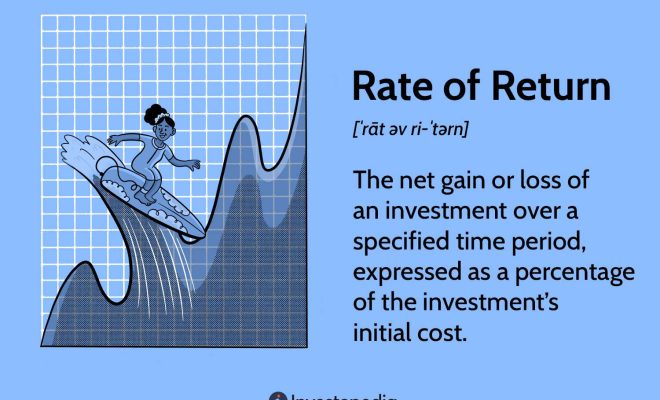How to Calculate Return Rate

Calculating return rates is a critical aspect of investing. The return rate provides investors with vital information about how well their investments are performing and whether they’re achieving their financial goals. In this article, we’ll explain what return rate is, why it’s important, and provide step-by-step instructions on how to calculate it.
What is Return Rate?
Return rate, also known as rate of return (RoR), is the percentage that represents the gain or loss of an investment over a specific period. It allows investors to compare the performance of different investments and determine which ones are meeting their objectives.
Why is Return Rate Important?
Return rate plays a crucial role in understanding the performance of your investments for several reasons:
1. Assessing Portfolio Performance: Comparing the return rates of individual assets in a portfolio helps investors identify the best-performing investments and those that need adjustments.
2. Risk Management: Analyzing historical return rates helps investors understand the potential risks associated with different investment assets.
3. Allocating Assets: Investors can use return rates to decide which investments deserve a larger portion of their investment capital.
4. Tracking Financial Goals: By measuring portfolio performance against personal financial goals, investors can make informed decisions on whether to change their investment strategies.
How to Calculate Return Rate
To calculate the return rate for an investment, follow these steps:
Step 1: Determine the Initial and Final Value of the Investment
The initial value (IV) refers to the amount initially invested in an asset, while the final value (FV) refers to its value at the end of the investment period.
Step 2: Calculate Gain or Loss
Subtract the initial value from the final value to determine whether you have made a gain or loss:
Gain/Loss = FV – IV
Step 3: Divide Gain or Loss by Initial Value
Next, divide your gain or loss by the initial value of the investment:
Percentage Gain/Loss = (Gain/Loss) / IV
Step 4: Multiply by 100 to Express as a Percentage
To express your return rate as a percentage, multiply the result obtained in Step 3 by 100:
Return Rate (%) = Percentage Gain/Loss * 100
Example:
Let’s say you invested $10,000 in a stock (IV) and its value increased to $12,000 after one year (FV). Here’s how you would calculate the return rate:
1. Gain/Loss = FV – IV = $12,000 – $10,000 = $2,000
2. Percentage Gain/Loss = (Gain/Loss) / IV = $2,000 / $10,000 = 0.20
3. Return Rate (%) = Percentage Gain/Loss * 100 = 0.20 * 100 = 20%
In this example, your return rate is 20%, indicating a successful investment.
Conclusion
Calculating return rates is essential for investors who want to evaluate their investments’ performance and make informed decisions about their portfolios. Understanding and tracking your return rate can help you assess risk, allocate assets effectively, and ultimately achieve your financial goals.






